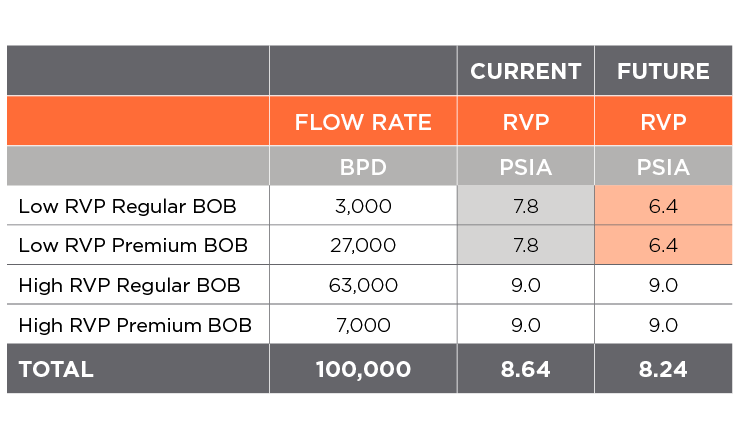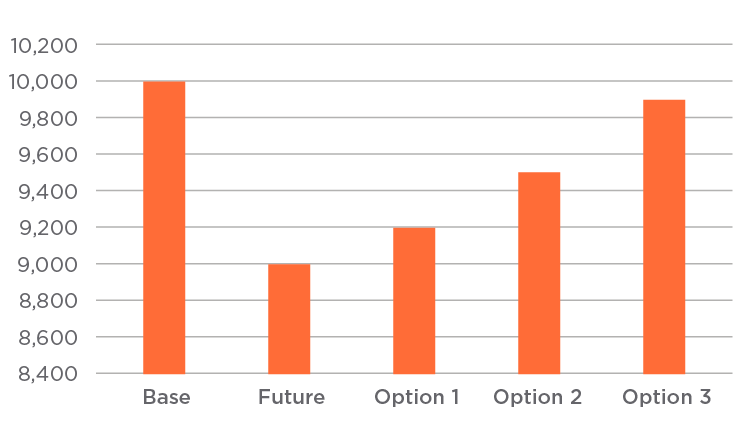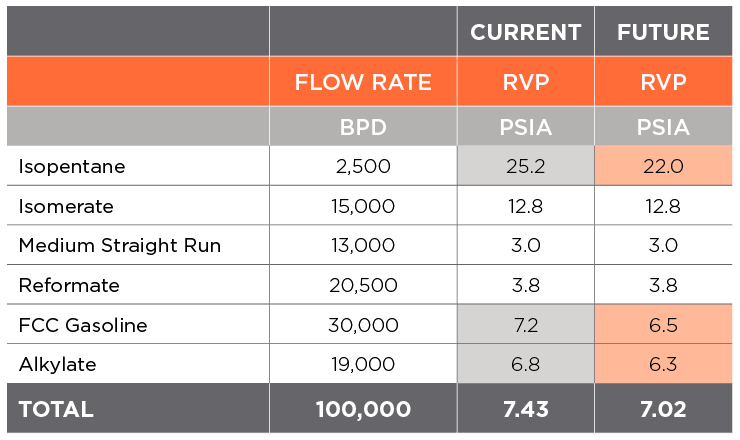The refining industry is facing at least three significant challenges related to gasoline specifications.
- Ozone Nonattainment Areas
Beginning in the 1970s, the EPA began reviewing how the increasing presence of smog in heavily populated areas was contributing to human health issues. Regulators zeroed in on ozone as an agent that causes smog. It also is considered a lung irritant linked to certain human health problems.
Gasoline vapor is a contributor to excessive ozone and thus has become an area of concern for the EPA and other environmental authorities. Federal ozone standards were enacted under the 1970 Clean Air Act, and subsequent amendments have given the EPA authority to periodically monitor areas for attainment of ozone standards.
Despite much progress nationwide in reducing ozone as well as other agents causing air pollution, some major cities still struggle to reach the EPA’s clean air attainment standards for ozone. In 2022, certain major metropolitan areas were named as nonattainment areas for federal ozone standards. Among these, the Dallas-Fort Worth and Denver metros are home to a number of counties that will see more stringent RVP specifications.
These heavy population centers made the list because of persistent inability to reduce ozone levels based on three-year averages. Consequently, these areas face tougher air pollution rules that will likely require gasoline refiners to begin selling less-volatile, lower-RVP fuel by the start of the 2024 summer ozone season.
Even though lower RVP standards have already been required during the summer months, allowable gasoline vapor pressures will be ratcheted down even more. These standards are likely to vary county by county, depending on the air quality data. For example, 9 PSI of vapor pressure as measured by RVP might meet specifications (spec) in one county, while in an adjoining county it might be 7.4 PSI.
- E15 Could Be the New Standard
Nine states with relatively large agriculture economies are now pushing for approval from the EPA to permanently increase allowable ethanol blends in gasoline from 10% to 15% on a year-round basis. Currently, these so-called E15 blends are allowed during the winter months in the nine states leading this charge: Illinois, Iowa, Kansas, Minnesota, Nebraska, North Dakota, Ohio, South Dakota and Wisconsin. The federal Office of Management and Budget (OMB) initiated an official review of the request in 2022, as required by law.
E15 blends already have been allowed in all 50 states during the winter driving season because vapor pressures are a lower concern during those periods. What’s more, both the Trump and Biden administrations have given interim approval for year-round E15 blends. With that track record already established, the governors of the nine states named above are now pushing for permanent authorization in their states to put E15 on equal regulatory footing with E10 blends all year round. They are being strongly backed by the ethanol industry along with a number of agribusiness associations who support permanent expansion of this new standard to all 50 states.
As part of the push, the requesting states have suggested shelving the so-called 1-PSI waiver rule, which essentially says that 1 PSI of vapor pressure under the RVP measurement formula need not be counted in determining spec for gasoline in a given area. The EPA agreed to approve the waiver because ethanol is considered a biofuel, thus resulting in lower carbon intensity (CI) for blended gasoline.
To illustrate: If spec gasoline for a given county is 9 PSI, but the actual E10 gasoline is 10 PSI under the RVP formula, it could still be sold in that area because one PSI of vapor pressure is not counted.
If the waiver rule is ended, the compliance burden for meeting the EPA’s rules for spec gasoline would shift completely to refiners. For example, in the same hypothetical 9-PSI area discussed earlier, spec gasoline would have to actually be 9 PSI instead of 10 PSI when it is trucked from the refinery.
If approved, refiners would face a number of issues, particularly those selling gasoline in severe nonattainment areas that will undoubtedly face very low RVP thresholds. Refiners would have to reduce RVP by more than 1 PSI for most types of commercial gasoline formulated for subsequent blending with ethanol — a process commonly known as before oxygenate blending (BOB). This would obviously vary widely by geography, depending on how tight the air quality rules turn out to be in certain jurisdictions, but is certain to be a huge new burden on refiners.
- Growth of Diesel Market
A third disrupting factor called “dieselization” is already impacting refiners as market economics shift toward jet and diesel versus gasoline. It’s all about the distillate that is needed for these various fuel types.
The spectrum for these different fuels is well-known within the industry, but bears repeating:
- Gasoline is the lightest on the spectrum, with a boiling range of approximately 100 to 400 degrees Fahrenheit (F), depending on the season and market factors.
- Jet fuel is next on the spectrum, with a boiling range of approximately 300 to 572 degrees F.
- Diesel occupies the last position, with an approximate boiling range between 300 and 700 degrees F.
There are molecules that can be directed to gasoline or to diesel and jet, and depending on market conditions can be directed into any of these fuel types. The truth is that market economics are shifting toward diesel production almost year-round. The days of winter as “diesel season” and summer as “gasoline season” appear to be coming to a close.
As ethanol is blended into gasoline at higher volumes, the growth rate of the gasoline market is generally lower than for jet and diesel, which are more difficult for biofuels to penetrate. With more money to be made producing diesel, more refineries — particularly those already dealing with tight margins — will continue to shift refinery capacity away from gasoline.
Another factor is ongoing electrification of the surface transportation fleet. Though electric vehicles (EVs) have not currently lessened demand for gasoline by significant amounts, they are slowing growth. It’s a factor that will gain importance over time as more EVs hit the road.
All these factors are likely to mean market share for diesel will grow over the long term, reducing market share for gasoline.
Although biodiesel, renewable diesel, and sustainable aviation fuel (SAF) projects have been increasing their market share in recent years, these campaigns are generally considered feedstock constrained. Electric trucks and hydrogen may also penetrate the distillate market as time moves forward, but development of these markets faces a number of challenges and requires significant time to overcome the technical and logistical hurdles.






